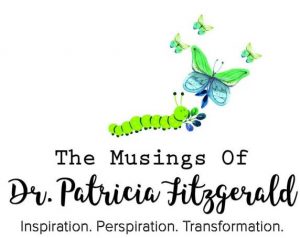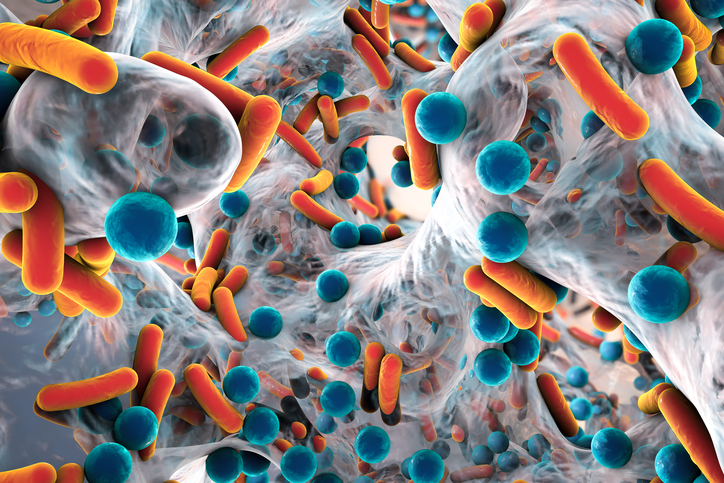When I started my practice over 25 years ago, antibiotics were still largely considered to be a “magic pill,” dolled out for everything from colds and flu to minor ear infections. It seemed like most people weren’t questioning their prescriptions, let alone inquire about their potentially harmful long-term effects.
Many were not aware at the time that antibiotics weren’t helpful for viruses and did, in fact, weaken your immunity and digestive health over time.
Fast forward to 2017 and the world is abuzz with the latest medical health crisis that is antibiotic resistance.
And make no mistake, despite that most people are still regularly prescribed antibiotics (to the tune of a quarter billion courses a year, per the CDC), this is a very serious health crisis. According to the Centers for Disease Control, it is considered “one of the world’s most pressing public health problems”1.
But what can one person do amidst a complicated and seemingly insurmountable crisis like this?
Believe it or not, experts agree that antibiotic resistance is a numbers game—the more people use them, the greater resistance becomes.
Which means, every single person counts.
And that’s the point of today’s post: to empower you with the information you need on modern antibiotics, including what they do, how they help, how they harm (beyond just wiping out your gut bacteria), and how to seek advice on natural alternatives. Plus, learn how to fortify your body so you can avoid unnecessary use and stop resistance.
A lot has changed since the 1980s. Read on to learn how to protect yourself and play your part in the numbers game of reducing antibiotic resistance.
Antibiotics 101: What They Are, What They Do
Antibiotics are a class of drugs that cure bacterial infections by killing bacteria in your body or halting its growth2.
Since their discovery in 1928, antibiotics have advanced from a simple penicillin-based drug to a variety of more complex broad-spectrum and ultra-specific antimicrobials.
Each with its own specific benefits and side effects.
In other words, the antibiotics you and your children are taking are vastly different from what your parents and grandparents took.
Is this a good thing or not?
Like the function of antibiotics themselves, this is a win-lose situation.
Yes, modern antibiotics can treat a greater variety of infections in a greater variety of people…and they do save lives.
However, the complex and little-known side effects are taking a massive toll on our health.
The Two Most Dangerous Side Effects of Modern Antibiotics
One BIG misconception about antibiotics is that they only negatively affect your gut bacteria, which you can fix by consuming probiotics.
How many times has your doctor told you to eat yogurt with your antibiotics to prevent stomach upset?
While this advice is somewhat sound (not all yogurt cultures will stand up to antibiotics or provide enough good bugs to balance their effects), it fails to address two of the most dangerous, little-known side effects of modern antibiotics:
- Antibiotic resistance, and
- Cell and DNA Damage
We’ll look at the issue of antibiotic resistance (and what you can do to protect yourself from it) in just a minute. But first, let’s look at this very real threat of cell and DNA damage.
In this rather recent scientific discovery published in the journal Science Translational Medicine 3, researchers found that commonly used antibiotics are toxic to our mitochondria—the essential powerhouses of our cells that take in nutrients and convert them to energy.
In addition to damaging our mitochondria, exposure to a variety of antibiotics has also been shown to increase the formation of toxic free radicals that further damage our cells, tissues, and DNA.
This is a HUGE problem, especially considering the sheer amount of antibiotics most people take in a lifetime.
Thankfully, researchers in this same study also observed a work-around to this problem in the form of the amino acid supplement: N-acetyl-L-cysteine, (NAC). According to the researchers, this simple nutrient could be key in “improving the safety of antibiotic treatment in people.”
NAC is natural, widely available, safe, and can be taken with antibiotics.
Today’s Antibiotic Resistance—The Medical Crisis of Our Time
It’s no mystery that antibiotic resistance is a serious public health issue.
The mystery lies in why antibiotic prescriptions, use in agriculture, and antimicrobial-containing products are still so prevalent in the midst of such a life-threatening epidemic.
To help drive the severity of this situation home, let me share a few sobering facts:
- The CDC conservatively estimates 2 million Americans become infected and 23,000 Americans die each year from antibiotic-resistant bacteria5
- According to a study review published in the American Journal of Infection Control, 1 in 4 nursing home residents harbors antibiotic-resistant bacteria6
- Despite the fact antibiotic resistance is driven by the amount that’s given to people and animals, the United States is one of the greatest users of antibiotics in livestock production
- The cost of antibiotic resistance is expected to grow to 10 trillion dollars annually by 2050
And the Main Cause of This Crisis?
In one word: overuse. Both in terms of over-prescribing AND prolonged use. Which brings me to our next point…
Is It Wise to Finish That Course of Antibiotics?
Though we have been conditioned to finish an entire course of antibiotics (lest we regress and require more, which could increase our risk of resistance), it appears this isn’t necessarily true.
While some conditions surely warrant completion of a full course, many don’t. And, science has shown, reducing your course won’t put you at further risk of resistance.
How do you know when to finish your course?
My best advice is to partner with an integrative medical doctor who understands the implications of antibiotic use, and can, therefore, advise you on the best course of action.
In addition to building up your immunity, which will make you less susceptible to infections requiring antibiotics (see previous post: Autumn and Chinese Medicine: Wisdom for Immunity, Vitality, and Emotional Wellness), there are also a number of highly effective natural, herbal antibiotics you can consider, which I’ll get into right now.
Herbal Antibiotics as an Alternative?
Certainly antibiotics save lives. Antibiotics saved my life when I was six months old, so I am very aware that I wouldn’t be alive to write this article if it wasn’t for their powerful qualities.
This article is not at all meant to criticize antibiotics, but to shed light on the effects of overuse. As more and more people are expressing similar concerns, I am often asked about herbal antibiotics.
For those wishing to pursue that route, my suggestion would be to seek the care of a practitioner who has significant herbal training and experience. You need to be evaluated properly and have a treatment plan appropriate for you. Doctors of Acupuncture and Oriental Medicine (DAOM) and Naturopathic Doctors (ND) have at least four years of herbal education. Other medical professionals also have engaged in herbal study programs.
Do your homework and find a professional with not only the education and experience, but someone you can communicate well with so you can not only overcome a condition with natural support, but also strengthen your immune system. Building up your immunity will make you less susceptible to infections requiring antibiotics (see previous post: Autumn and Chinese Medicine: Wisdom for Immunity, Vitality, and Emotional Wellness). We will explore more tips for immune fortification in upcoming articles.
–Dr. Patriciia
- https://www.cdc.gov/getsmart/community/about/antibiotic-resistance-faqs.html
- https://www.cdc.gov/getsmart/community/about/antibiotic-resistance-faqs.html
- https://www.ncbi.nlm.nih.gov/pmc/articles/PMC3760005/
- https://www.cdc.gov/drugresistance/threat-report-2013/index.html[\note]. And many experts believe the actual numbers may be up to 4 times higher (that’s 92,000 Americans)
- The global death toll due to superbugs is estimated at 700,000 and is expected to increase to 10 million annually by 20504https://amr-review.org/sites/default/files/AMR%20Review%20Paper%20-%20Tackling%20a%20crisis%20for%20the%20health%20and%20wealth%20of%20nations_1.pdf
- https://medicalxpress.com/news/2017-05-nursing-home-residents-antibiotic-resistant-bacteria.html

